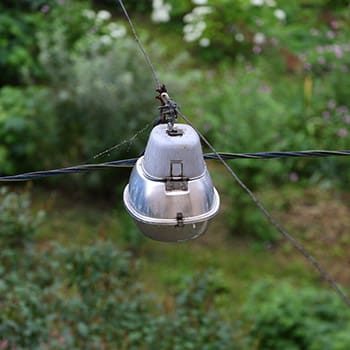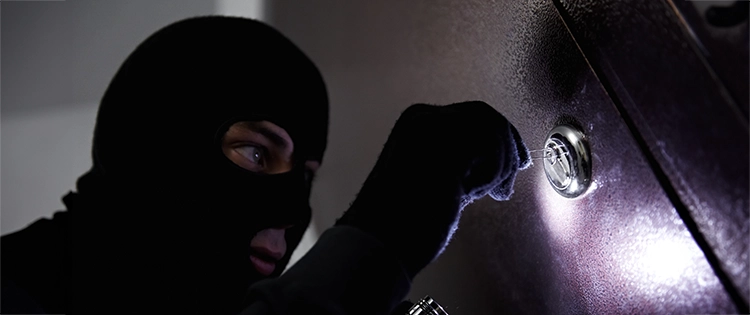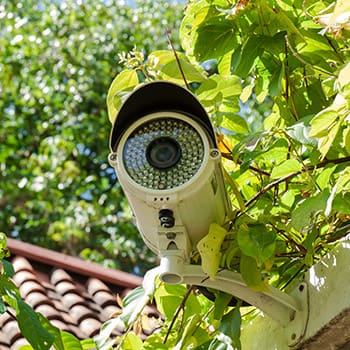Over the years, I’ve learned that protecting your property isn’t just about locks and alarms. It’s about outsmarting those who’d try to take what’s yours. I’ve had my fair share of close calls with looters, and along the way, I’ve discovered some effective traps to catch looters and keep them from coming back.
Today, I’m going to share some of the most ingenious traps and deterrents I’ve used over the years to safeguard my property. But before we dive in, let’s get one thing straight – this isn’t about hurting anyone. It’s about protecting what’s ours and sending a clear message to would-be thieves.
Legalities and Ethics of Setting Traps to Catch Looters on Your Property
After having a few run-ins with the law over the years, let me tell you, it’s not fun explaining your homemade security system to a skeptical sheriff. That’s why I want to stress the importance of knowing your local laws inside and out before setting up any traps to catch looters.
In my state, for instance, it’s illegal to set any trap that could cause bodily harm to a person, even if they’re trespassing. But that doesn’t mean we’re defenseless. We just need to get creative with traps to catch looters that stay within the bounds of the law.
Tripwires and Alarms
One of my favorite setups is a simple tripwire alarm system. I’ve got these strung up all around my property, and they’ve saved my bacon more times than I can count.
To set up a simple perimeter alarm system, you’ll need a few basic items: a strong, nearly invisible fishing line, small bells or tin cans, a handful of pebbles, and some sturdy stakes or trees to anchor the line. Begin by tying one end of the fishing line to a tree or stake, and then run the line at ankle height to another anchor point.
Along this line, attach bells or tin cans filled with pebbles. Ensure the line is taut but not overly tight, so it won’t snap easily. This setup will alert you to any unwanted movement around your area.
When someone trips the wire, those bells start jingling like crazy. It’s enough to startle most intruders and give you a heads-up that something’s amiss.
DIY Pressure Plates Using Old Doormats
This is a trick I came up with after finding an old doormat in my shed. To create a homemade pressure-sensitive alarm, start by taking an old rubber-backed doormat and cutting a piece of plywood to fit inside it. Place a simple pressure switch between the mat and the plywood, effectively “sandwiching” it in place.
Then, connect the pressure switch to an alarm or light. When someone steps on the mat, the pressure activates the switch, triggering the connected device.
I’ve got one of these under the welcome mat at my back door. If anyone steps on it when they shouldn’t, I know about it right away.
Related: How To Make A Pressure Sensor Pad To Know When You Have An Intruder On Your Property
Creative Traps To Catch Looters: Adhesive With Roofing Tar
This one’s messy but effective. I place this trap near windows and other potential entry points. First, I spread a thin layer of roofing tar on a piece of plywood. Then, I cover the tar with leaves or dirt to blend it into the surroundings. When an intruder steps on it, the sticky tar makes it difficult for them to move quietly, potentially deterring them from advancing further.
If someone steps on it, they’ll find their shoes stuck fast. It won’t hurt them, but it’ll sure slow them down!
The Cornstarch and Water Slick
This is a trick I learned from an old farmer down the road. Mix cornstarch and water to create a non-Newtonian fluid.
When someone steps on it quickly, it hardens, making it difficult to move. But step slowly, and it acts like a slippery goo. I’ve used this on pathways around my property. It’s harmless, but it sure does confuse intruders!
Improvised Foam Pits Using Old Mattresses
Got some old mattresses lying around? Here’s how to put them to use: Start by digging a shallow pit and lining it with old mattresses. Next, cover the mattresses with a thin layer of leaves or straw.
If someone falls in, they won’t be hurt, but they’ll have a hard time getting out quickly. I’ve got one of these near my tool shed, and it’s caught more than one would-be thief off guard.
Homemade Stink Bombs and Traps to Catch Looters Using Natural Ingredients
I whip these up using a mix of overripe eggs, fish sauce, and a dash of vinegar. Let it ferment for a few days in a sealed container, then set up trip wires to release the smell if someone enters a restricted area.
Trust me, one whiff of this concoction and they’ll be running for the hills!
Deploying Chicken Manure as a Perimeter Defense
As a homesteader with a decent-sized chicken coop, I’ve got plenty of this stuff. I spread it liberally around the edges of my property.
Not only does it keep intruders away, but it’s also a great fertilizer for my fields. Talk about killing two birds with one stone!
Crafting Convincing Fake Strongboxes
I’ve got a few of these scattered around my property. They might resemble heavy-duty safes, but they’re actually crafted from painted plywood, old hinges, and a fake combination lock.
I leave them in semi-obvious places. While a potential thief is wasting time trying to crack these decoys, my real valuables are safely hidden elsewhere.
Setting Up Dummy Security Cameras and Traps to Catch Looters on the Cheap

You can pick up fake security cameras for a few bucks online. I’ve mounted these in visible locations around my homestead.
They look just like the real thing, complete with blinking LED lights. Most intruders won’t stick around to find out if they’re genuine or not!
The “Wasp Nest” Bluff
This is a trick I learned from an old timer down the road. I make fake wasp nests using brown paper bags, gray spray paint, and a bit of cotton for texture.
I hang these near windows and other entry points. Even the bravest intruder thinks twice before messing with a wasp nest!
Training Geese and Guinea Fowl as Alarm Systems
I keep a small flock of geese and guinea fowl. Not only do they provide eggs and meat, but they’re also fantastic watchdogs.
At the slightest disturbance, they set up a racket that can wake the dead. I’ve had more than one potential intruder scared off by my feathered security team!
Strategic Placement of Beehives Near Entry Points
As a homesteader, I keep bees for honey and pollination. But they also serve another purpose. I’ve placed hives near potential entry points to my property.
The sight of a buzzing beehive is enough to make most people think twice about coming closer.
Fast-Growing Thorny Plants for Natural Barriers
I’ve planted dense hedges of thorny plants such as blackberry bushes, hawthorn, and Rosa rugosa.
These create a natural barrier that’s difficult and painful to push through. Plus, they provide me with delicious berries!
Why Clever Traps to Catch Looters Matter for Homesteaders
Living off the grid comes with its own set of challenges, and security is right at the top of that list.
I remember when I first moved to my 40-acre plot in the middle of nowhere. The nearest neighbor was miles away, and the local sheriff’s office? Well, let’s just say their response time wasn’t exactly speedy.
Rural properties are prime targets for looters. They’re isolated, often unattended for long periods, and chock-full of valuable equipment and supplies. That’s why we homesteaders need to get creative with our security measures.
When to Call in the Professionals
Despite all these DIY methods, there are times when it’s best to call in professional help. I’ve developed a good relationship with local law enforcement, and I don’t hesitate to call them if I suspect a serious threat. While setting up traps to catch looters might sound appealing, remember the goal is to deter and identify, not to harm.
Always prioritize safety and legality in your security measures. With a bit of creativity and some homesteader ingenuity, you can design traps to catch looters and create a security system that’ll keep your property safe without breaking the bank.
The #1 Enemy of Going Off Grid
How to Looter-Proof Your Property (Video)
Do THIS Before the Grid Goes Down

















Treble hooks at chest height … hard to see, and they work.